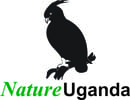Training a Cohort of Herpetologists to Increase Baseline Data Knowledge in Uganda – to Build Capacity for Herpetology Surveys in Key Ecosystems of East Africa
Uganda is one of the most biodiversity-rich countries in Africa, with several major biomes converging in the country. Currently, Uganda has about 22% of world’s amphibian and 19% reptilian species, yet key taxa remain poorly known or undocumented. The species distribution for both amphibians and reptiles in several key sites is incomplete or altogether missing. This grant will train a group of 10 students and 20 assistants in accurate field data collection (including taxonomy, population status and distribution) through both in situ and lab work.
This effort estimates that some 50,000 records will be generated, uploaded and publicly shared on data portals (GBIF/NBDB). Amphibians are well known to be key indicator species for wetlands and this project will mobilize taxonomic records and provide critical baseline data for evaluating biodiversity richness in the project areas, and to identify, map and promote conservation of freshwater Key Biodiversity Areas (KBAs).
The project identifies the following direct objectives and primary activities:
Objective 1: Train a cohort of at least 10 Ugandan students and 20 assistants in herpetological identification and data collection methods collection (to include taxonomy, population status and distribution) through both in situ and lab work.
Objective 2: Collect field observation records of amphibian and reptilian species from selected eco-regions of Uganda, and enter them in databases on readily accessible portals. Resulting data will be shared through national and international biodiversity portals such as Nature Uganda, NBDB, GBIF.
Objective 3: Generate at least 50,000 records through field research surveys, data mining, collating, vetting, curation, storage and dissemination on web-portals of Uganda’s freshwater biodiversity.
Objective 4: Package and publicize the data in formats to be shared with different stakeholders including researchers, policy users, local communities and the public.



